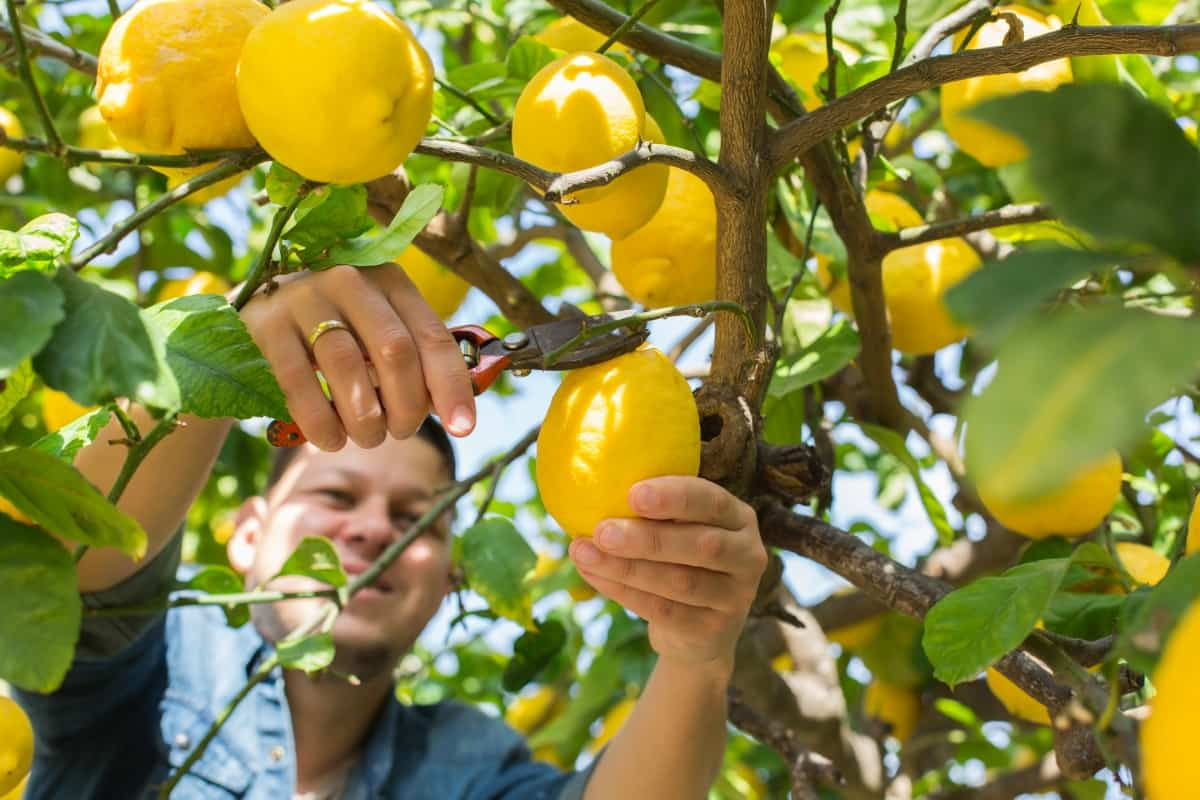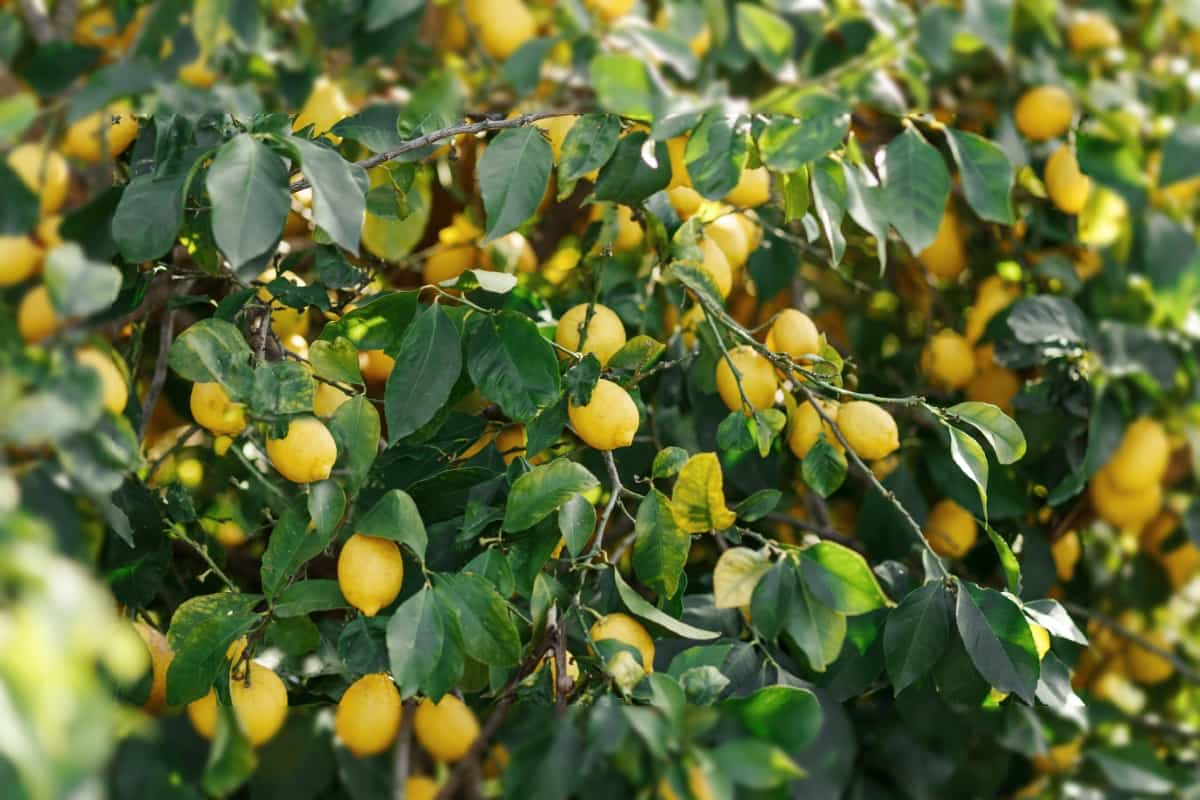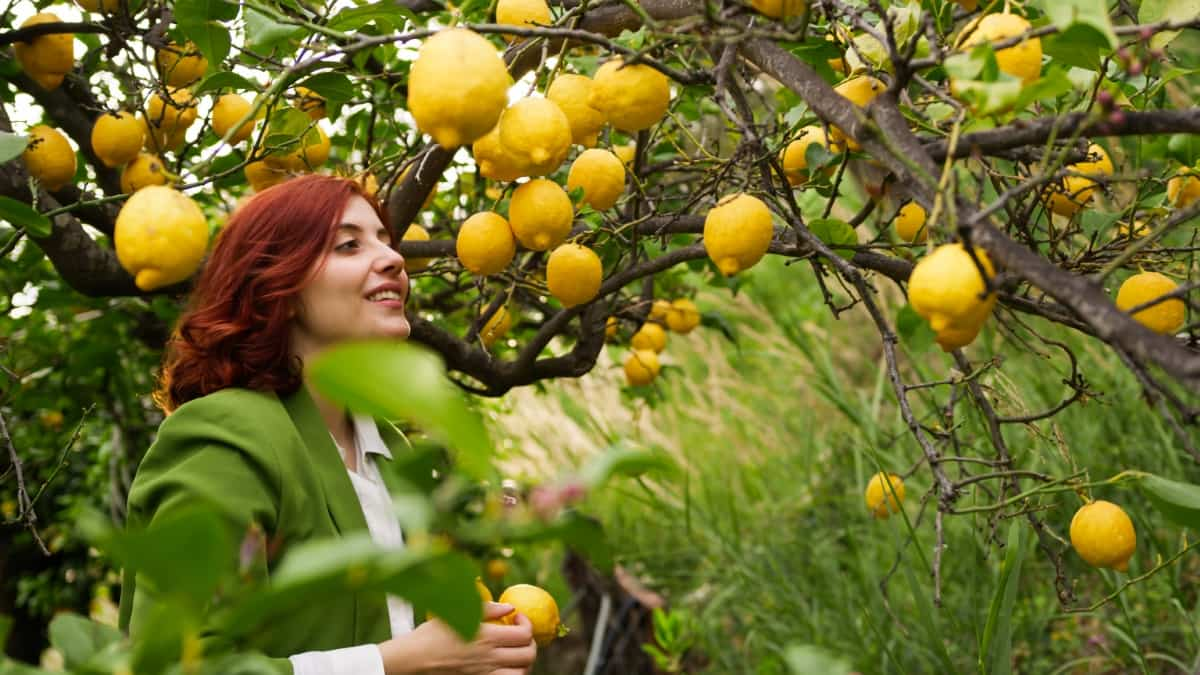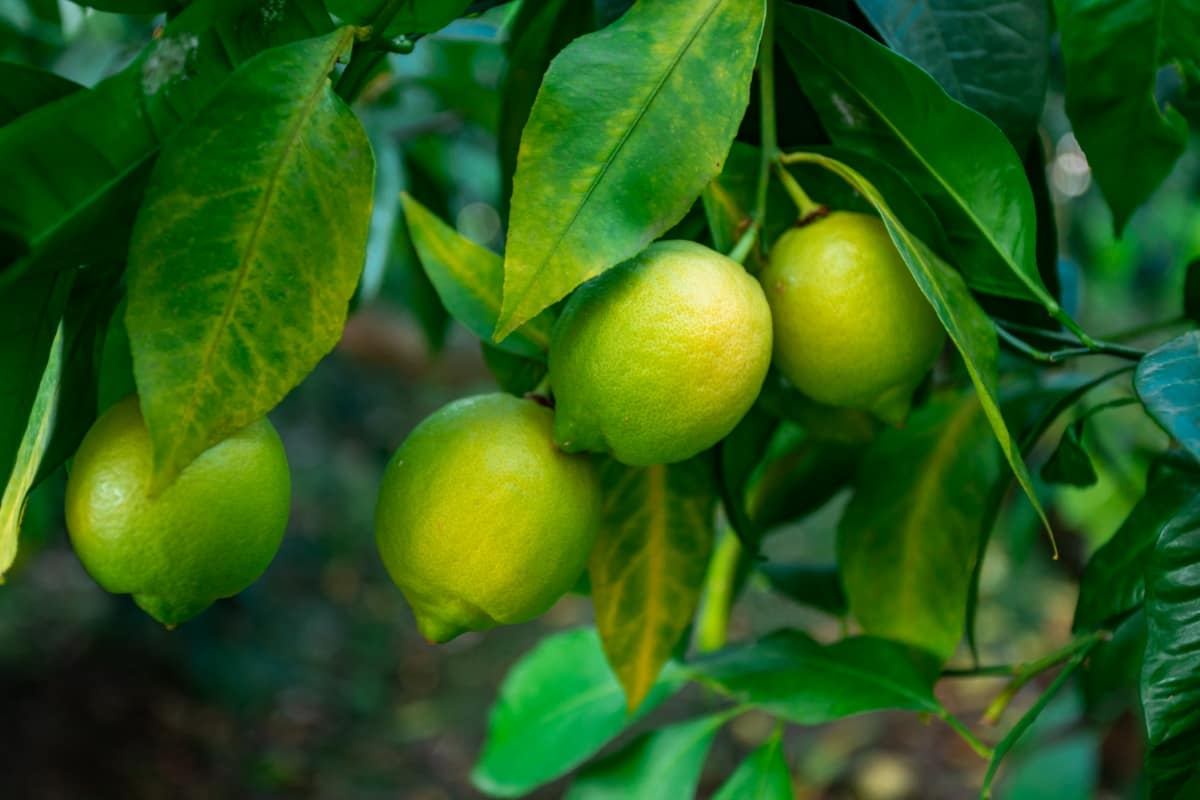When your Lemon tree is not blooming and fruiting as expected, it can be disappointing and concerning. Understanding the Causes of Lemon Tree Failure and Causes of Lemon Tree Fruiting problems and implementing effective Remedies and Treatment is crucial for improving lemon tree yield. In this blog, we’ll explore ten reasons why lemon trees may not be blooming and fruiting, along with practical solutions.

Lemon Tree is Not Blooming and Fruiting
Inadequate Sunlight
Lemon trees require full sunlight to bloom and fruit abundantly. If your lemon tree is not receiving enough sunlight, it may struggle to produce flowers and fruit. Ensure that your lemon tree is planted in a location where it gets at least six to eight hours of direct sunlight each day.
Maximizing Sun Exposure
To improve sunlight exposure for your lemon tree, consider trimming surrounding trees or structures that may be casting shade. Additionally, strategically placing reflective surfaces such as white walls or mirrors can help redirect sunlight toward the lemon tree, promoting better blooming and fruiting by ensuring proper Sunlight requirements for lemon trees.
Pruning for Better Light Penetration
Regular pruning of your lemon tree can help enhance air circulation and light penetration throughout the canopy. Remove any dense or overgrown branches to allow sunlight to go to the inner parts of the tree where flowers and fruit develop.
Improper Watering
Over or under-watering can both contribute to blooming and fruiting problems in lemon trees. Inconsistent watering can stress the tree and lead to flower and fruit drop. Ensure that your lemon tree is watered sufficiently and evenly, allowing the soil to dry partially between watering sessions.
Correcting Watering Frequency
Establishing a regular Watering schedule for lemon trees is crucial for maintaining optimal soil moisture levels for lemon trees. Water the tree enormously once a week, depending on weather conditions and soil drainage. Avoid frequent shallow watering, as it can lead to shallow root growth and nutrient deficiencies.
Implementing Drip Irrigation
Drip irrigation systems can provide consistent moisture to lemon trees while minimizing water waste. By giving water directly to the root zone, drip irrigation ensures efficient water uptake and reduces the risk of over or under-watering.
Nutrient Imbalances
Nutrient deficiencies or excesses can negatively impact the blooming and fruiting of lemon trees. Common nutrient deficiencies in lemon trees include nitrogen, phosphorus, and potassium. Conduct a soil test to detect any nutrient imbalances and adjust fertilization accordingly.
Identifying Essential Nutrients
Lemon trees require specific Nutrient needs for lemon trees for healthy growth and fruit production. For example, nitrogen promotes leafy growth, phosphorus supports root development, and potassium enhances fruit quality. Choose a balanced fertilizer formulated for citrus trees and apply it according to label instructions.
Organic Fertilization Strategies
Organic fertilizers such as vermicompost, manure, and fish emulsion can provide essential nutrients to lemon trees while improving soil structure and fertility. Incorporate organic matter into the soil annually and supplement with organic fertilizers as needed throughout the growing season.
In case you missed it: How to Control Lemon Pests Naturally: How to Get Rid of Them with Natural and Organic Treatment

Unsuitable Soil pH
Lemon trees thrive on soil that is between pH 5.5 and 6.5, which is somewhat acidic. An excessively high or low pH of the soil might limit the availability of nutrients and prevent fruiting and flowering. Check the pH of the soil and, if needed, treat it with lime to increase it or elemental sulfur to reduce it.
Testing and Adjusting Soil pH
Use a soil pH testing kit to determine the acidity or alkalinity of your soil. Based on the test results, apply the appropriate amendments to bring the Soil pH for healthy lemon trees within the optimal range for lemon trees. Monitor the soil pH regularly and make adjustments as needed to maintain optimal conditions.
Maintaining Optimal pH Levels
Once you have corrected the soil pH, continue to monitor and maintain optimal levels to support healthy growth and fruit production in lemon trees. Regular applications of organic matter can help buffer soil pH and prevent drastic fluctuations.
Pest and Disease Pressure
Pest infestations and diseases can weaken lemon trees and inhibit blooming and fruiting. Common pests that affect lemon trees include citrus leaf miners, aphids, and scale insects, while diseases including citrus canker and citrus greening can cause severe damage.
Common Pests and Diseases
Common pests that affect lemon trees include citrus leaf miners, aphids, and scale insects. Citrus leaf miners cause damage by tunneling through leaves, while aphids and scale insects suck sap from leaves and stems, causing yellowing and stunted growth. Common diseases of lemon trees include citrus canker, citrus greening, and powdery mildew, which can result in leaf spots, fruit deformities, and overall decline in tree health. Managing pests on lemon trees is important for better growth.
Organic Pest and Disease Management
Minimize reliance on synthetic pesticides by using organic pest and disease management strategies such as releasing beneficial insects, practicing proper sanitation, and applying organic fungicides and insecticides when necessary. Encourage natural predators to keep pest populations in check.
Environmental Stress Factors
Abiotic factors such as high temperatures, drought, and strong winds can stress lemon trees and affect blooming and fruiting. Protecting trees from environmental stressors is essential for promoting overall health and productivity.
Protecting Trees from Heat and Frost
Provide shade during hot summer months and frost protection during cold winter nights to shield lemon trees from temperature extremes. Use shade cloth, frost blankets, or overhead structures to create a favorable microclimate for your lemon trees.
Windbreaks and Shading Techniques
Plant windbreaks such as hedges or install wind barriers to reduce the impact of strong winds on lemon trees. Additionally, strategically placing taller plants or structures to provide shade can help mitigate heat stress and sunburn on sensitive foliage.
Incorrect Pruning Practices
Improper pruning can remove too much foliage or disrupt the natural growth habit of lemon trees, impacting blooming and fruiting. Avoid excessive pruning, especially during active growth periods, and focus on removing dead, diseased, or crossing branches.
Best Pruning Times and Techniques
Prune lemon trees during the dormant season in late winter or early spring to get new growth and flowering. Use sharp, clean pruning tools to make precise cuts, and maintain an open canopy structure to allow sunlight to penetrate evenly.
Pruning for Health and Productivity
Prune lemon trees to promote airflow and light penetration, which are essential for reducing disease pressure and maximizing fruit production. Thin out overcrowded branches and remove any suckers or water sprouts to redirect the tree’s energy towards fruiting.
In case you missed it: Pest Management in Ivy Gourd: 100% Effective Treatment and Control Solutions

Lack of Pollinators
Lemon trees depend on pollinators such as bees and butterflies to transfer pollen among flowers and facilitate fruit sets. If pollinator populations are low, it can result in poor fruit development and yield.
Attracting Bees and Beneficial Insects
Create a pollinator-friendly environment by planting flowers that attract bees, butterflies, and other beneficial insects near your lemon trees. Avoid using pesticides that may harm pollinators and provide nesting sites such as bee hotels or undisturbed soil areas.
Hand Pollination Methods
If natural pollination is insufficient, you can manually pollinate lemon flowers by transferring pollen from one flower to another using a cotton swab. Slowly brush the inside of each flower to ensure thorough pollination and fruit set.
Tree Age and Maturity
Young lemon trees may take several years to reach maturity and produce abundant blooms and fruit. Patience is key when growing lemon trees, as it can take time for them to establish a strong root system and develop the energy reserves needed for fruiting.
Understanding Growth Stages
Lemon trees go through different growth stages, including vegetative growth, flowering, fruit set, and fruit maturation. Each stage requires particular care and attention to ensure optimal growth and development.
Patience with Young Trees
Young lemon trees may experience sporadic blooming and fruiting as they establish themselves in the landscape. Focus on providing proper care, including adequate sunlight, water, and nutrients, to support healthy growth and eventual fruit production.
Rootstock Issues
The choice of rootstock can impact the overall health and performance of lemon trees. Selecting a compatible rootstock with good disease resistance and vigor can improve blooming and fruiting success.
Choosing the Right Rootstock
Consult with a local nursery or extension service to choose a rootstock that is well-suited to your soil type, climate, and growing conditions. Keeping in mind factors such as disease resistance, growth habit, and compatibility with lemon scion varieties.
Grafting for Better Performance
Grafting lemon scions onto vigorous rootstocks can enhance overall tree health, productivity, and resilience to environmental stressors. Choose reputable nursery stock or consult with a professional grafter to ensure successful grafting and long-term tree performance.
In case you missed it: Why Moringa Flowers Turning Red: Causes, Solutions, and Care Tips

Conclusion
Addressing lemon tree blooming and fruiting problems requires careful attention to factors such as sunlight, watering, nutrient management, and pest control. By following lemon tree care tips and implementing proper pruning techniques, growers can enhance fruit production and ensure healthy tree growth through all stages of development. Additionally, attracting pollinators and considering grafting options can further support lemon tree health and productivity.
- Beneficial Insects in Pest Management
- Natural Solutions for Pest Control in Flower Gardens
- Types of Fungicides Used in Agriculture
- Common Issues in the Fruit Development Stage of Pomegranate Farming
- Fruit Development Issues in Papaya: Easy Solutions and Treatment
- Soil-Borne Diseases and How to Protect Your Plants
- Practices to Prevent Disease Spread in the Garden
- From Wilted to Thriving: How to Treat Root Rot Naturally in Houseplants
- Natural Remedies to Cure Brown Spots on Fig Tree Leaves